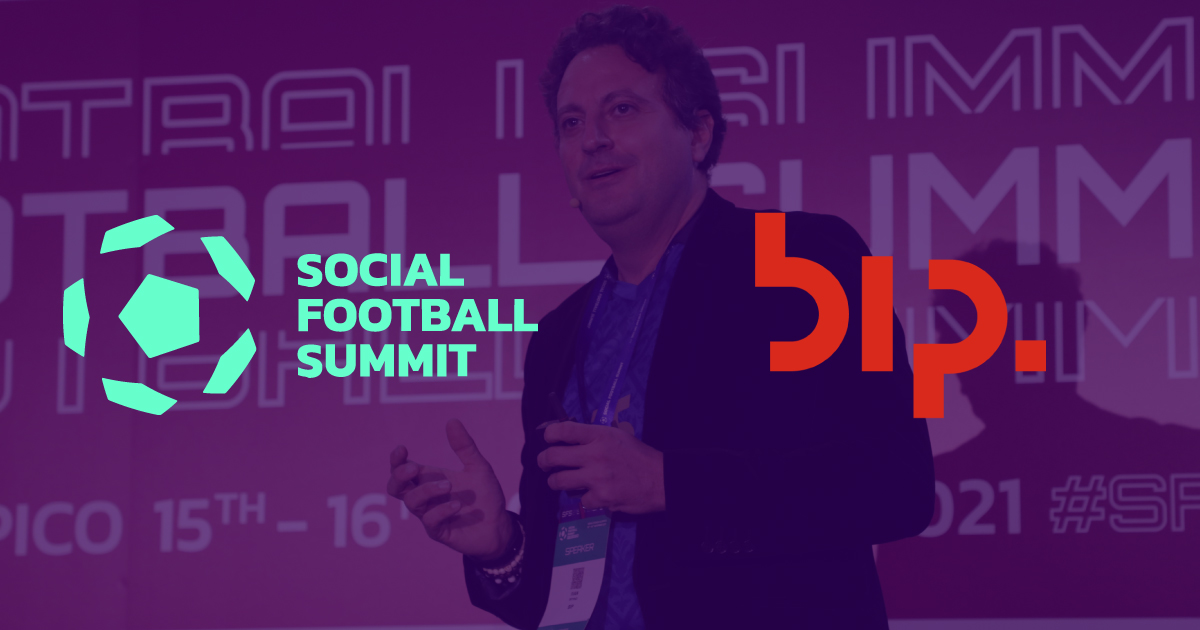One of the main challenges and fascinating aspects of having chosen to work in the industry of innovation as a profession – especially in the evolution of business models – is having to dare. Having to dare in making predictions, in exposing yourself in describing what will happen and why, in making assumptions and drawing evolutionary scenarios.
This exposes us to some risks but also to many satisfactions that do not just make us say “I had said that” or “we’ve been saying that for years” but rather complete our consulting support methodology and our ability to analyse risks and opportunities of a business model and its application to different business realities.
This is also the case when at BIP we deal with the Football Industry and its dynamics. I’d like to point out that it’s not about making predictions related to sports performance or results, from Mosca’s pendulum (I’m from Generation X) to modern-day tipsters, that’s a broadly addressed activity, but about analysing and working on the dynamics of the business model of the football industry as I do, and we do for other industries.
I refer to our well-established collaboration with Social Media Soccer in the organisation and management of the Social Football Summit, which began with its first edition in 2018 and is now heading for its 5th edition to take place in Rome, again at the Stadio Olimpico, on the 27th and 28th September 2022.
Our role, and specifically my participation as a key note speaker and as chairman of the round table discussions in the in-person, digital and hybrid editions, was to inspire industry operators with a vision and an operational look at the future of the football industry model.
Perhaps because almost the entire team is passionate about football and because of the dynamics of innovation outside the industry (e.g., pandemic and technological development), many of our predictions turned out to be correct, and they came true much earlier than we had assumed.
Our intervention has always dealt with the 10-year interval. In other words, we imagined the football industry ten years from the date of the event. But reality and the needs of business have speeded up the process.
Here are some examples
Edition no. 1, 2018:
- Establishment of e-sports
- Innovation of governance models (e.g., City Group)
- Creation of content factories and media houses
- Uberisation of content distribution (more channels, more formats)
Edition no. 2, 2019:
- Polarisation of the business model (e.g., Super League) and segmentation of the football product
- Development of an “extended experience company” model beyond media houses (PSG and Air Jordan)
- Using data and algorithms to negotiate contacts (Kevin De Bruyne and MCity)
- Tracking and 5g (automatic offside)
- Different distribution platforms, different products to be distributed
Edition no. 3, 2020:
- Demonstration of “the more you invest, the more you win” (Leicester effect)
- Growing OTT entry into the TV rights market
- Need for the solidarity fund and recovery also for football
- Innovation in contractual forms with increasing use of performance fees (need for an “objective” oracle) and formats from other industries (e.g., leasing)
Last year, we divided our predictions into two types of innovations:
Innovations in the game based on the need to have a much more dynamic, fast-paced product that responds to the needs of the new generations to regain audience:
- RULES
- Introduction of actual time
- VAR challenge (on call)
- Timed expulsion
- Implementation of unique offside (objective, technological)
Innovations in formats to increase product quality and optimise distribution strategies among different channels:
- FORMAT
- Adjustment of the seasonality of competition calendars (following the example of the American leagues)
- Need to reduce the number of clubs for leagues struggling on the revenue curve
- Experimentation of “Madness time” (e.g., final four or final phases of tournaments)
Innovations in football club management strategies pursuing economic-financial sustainability and revenue diversification:
- GOVERNANCE MODEL
- Openness to new investors (sovereignisation of the shareholding structure) and new control models (Hub/Spoke teams and sports holding companies)
- Capitalisation of new assets (tokenisation)
- Definition of the new perimeter of the content ownership concept (everything that is not “game” and their uses)
- Building the Digital Stadium
- Introduction of the Metaverse Manager
- DATA MODEL
- Creation of teams’ “Digital Twin”
- Increased need for cybersecurity
- Introduction and management of 5G devices
- Dynamic rights management and ticketing models
As you can check, we have already started working on and implementing many of these points. All our participation in the Summit had a lowest common denominator, namely the attention we have always given to the need, now turned into a pathology, to work on infrastructure, facilities, even going beyond the concept of an owned stadium; considering working and improving the physical experience a minimum result, a necessary but no longer enough condition to optimise the relationship with the fans (a word we use in order not to misuse either supporter or customer).
The football industry’s business model is changing, perhaps more out of induced necessity than strategic belief. Breaking down this fatalism and embracing the realisation that running a company in this industry is no different from running a company in other industries. But it requires specific tools and approaches is our central point in participating in the next edition of the Social Football Summit.
PALANTIR? NO, INNOVAZIONE
One of the main challenges and fascinating aspects of having chosen to work in the industry of innovation as a profession – especially in the evolution of business models – is having to dare. Having to dare in making predictions, in exposing yourself in describing what will happen and why, in making assumptions and drawing evolutionary scenarios. This exposes us to some risks but also to many satisfactions that do not just make us say “I had said that” or “we’ve
